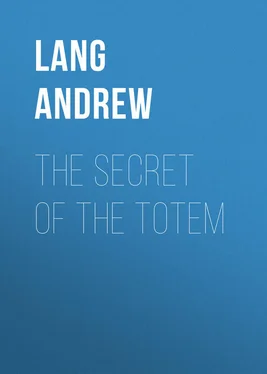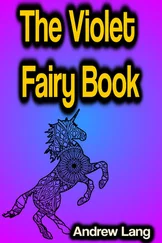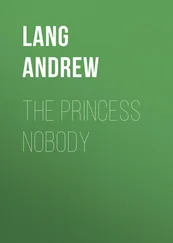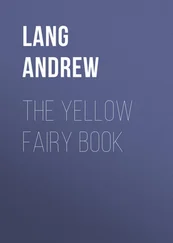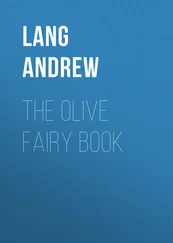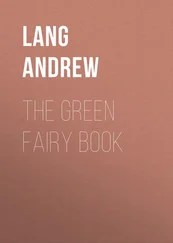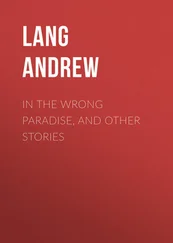Andrew Lang - The Secret of the Totem
Здесь есть возможность читать онлайн «Andrew Lang - The Secret of the Totem» — ознакомительный отрывок электронной книги совершенно бесплатно, а после прочтения отрывка купить полную версию. В некоторых случаях можно слушать аудио, скачать через торрент в формате fb2 и присутствует краткое содержание. Жанр: foreign_antique, foreign_prose, на английском языке. Описание произведения, (предисловие) а так же отзывы посетителей доступны на портале библиотеки ЛибКат.
- Название:The Secret of the Totem
- Автор:
- Жанр:
- Год:неизвестен
- ISBN:нет данных
- Рейтинг книги:4 / 5. Голосов: 1
-
Избранное:Добавить в избранное
- Отзывы:
-
Ваша оценка:
- 80
- 1
- 2
- 3
- 4
- 5
The Secret of the Totem: краткое содержание, описание и аннотация
Предлагаем к чтению аннотацию, описание, краткое содержание или предисловие (зависит от того, что написал сам автор книги «The Secret of the Totem»). Если вы не нашли необходимую информацию о книге — напишите в комментариях, мы постараемся отыскать её.
The Secret of the Totem — читать онлайн ознакомительный отрывок
Ниже представлен текст книги, разбитый по страницам. Система сохранения места последней прочитанной страницы, позволяет с удобством читать онлайн бесплатно книгу «The Secret of the Totem», без необходимости каждый раз заново искать на чём Вы остановились. Поставьте закладку, и сможете в любой момент перейти на страницу, на которой закончили чтение.
Интервал:
Закладка:
We have now given the essential facts in the problem of early society as it exists in various forms among the most isolated and pristine peoples extant. It has been shown that the sets of seniority (classes), the exogamous moieties (phratries), and the kinships in each tribe bear names which, when translated, are usually found to denote animals. Especially the names of the totem kindreds, and of the totems, are commonly names of animals or plants. If we can discover why this is so, we are near the discovery of the origin of totemism. Meanwhile we offer some remarks as to the method to be pursued in the search for a theory which will colligate all the facts in the case, and explain the origin of totemic society. In the first place certain needful warnings must be given, certain reefs which usually wreck efforts to construct a satisfactory hypothesis must be marked.
First, it will be vain to look for the origin of totemism either among advanced and therefore non-pristine Australian types of tribal organisation, or among peoples not Australian, who are infinitely more forward than the Australians in the arts of life, and in the possession of property. Such progressive peoples may present many interesting social phenomena, but, as regards pure primitive totemism, they dwell on "fragments of a broken world." The totemic fragments, among them, are twisted and shattered strata, with fantastic features which cannot be primordial, but are metamorphic. Accounts of these societies are often puzzling, and the strange confused terms used by the reporters, especially in America, frequently make them unintelligible.
The learned, who are curious in these matters, would have saved themselves much time and labour had they kept two conspicuous facts before their eyes.
(1) It is useless to look for the origins of totemism among the peculiarities and "sports" which always attend the decadence of totemism, consequent on the change from female to male lineage, as Mr. Howitt, our leader in these researches, has always insisted. To search for the beginnings among late and abnormal phenomena, things isolated, done in a corner, and not found among the tribal organisations of the earliest types, is to follow a trail sure to be misleading.
(2) The second warning is to be inferred from the first. It is waste of time to seek for the origin of totemism in anything – an animal name, a sacred animal, a paternal soul tenanting an animal – which is inherited from its first owner, he being an individual ancestor male. Such inheritance implies the existence of reckoning descent in the male line, and totemism conspicuously began in, and is least contaminated in, tribes who reckon descent in the female line.
Another stone of stumbling comes from the same logical formation. The error is, to look for origins in myths about origins, told among advanced or early societies. If a people has advanced far in material culture, if it is agricultural, breeds cattle, and works the metals, of course it cannot be primitive. However, it may retain vestiges of totemism, and, if it does, it will explain them by a story, a myth of its own, just as modern families, and even cities, have their myths to account for the origin, now forgotten, of their armorial bearings, or crests – the dagger in the city shield, the skene of the Skenes, the sawn tree of the Hamiltons, the lyon of the Stuarts.
Now an agricultural, metallurgic people, with male descent, in the middle barbarism, will explain its survivals of totemism by a myth natural in its intellectual and social condition; but not natural in the condition of the homeless nomad hunters, among whom totemism arose. For example, we have no reason to suspect that when totemism began men had a highly developed religion of ancestor-worship. Such a religion has not yet been evolved in Australia, where the names of the dead are usually tabooed, where there is hardly a trace of prayers, hardly a trace of offerings to the dead, and none of offerings to animals. 24 24 The Dieri tribe do pray to the Mura-Mura, or mythical ancestors, but not, apparently, to the remembered dead.
The more pristine Australians, therefore, do not explain their totems as containing the souls of ancestral spirits. On the other hand, when the Bantu tribes of Southern Africa – agricultural, with settled villages, with kings, and with many of the crafts, such as metallurgy – explain the origin of their tribal names derived from animals on the lines of their religion – ancestor-worship – their explanation may be neglected as far as our present purpose is concerned. It is only their theory, only the myth which, in their intellectual and religious condition, they are bound to tell, and it can throw no light on the origin of sacred animals.
The Bantu local tribes , according to Mr. M'Call Theal, have Siboko , that is, name-giving animals. The tribesmen will not kill, or eat, or touch, "or in any way come into contact with" their Siboko , if they can avoid doing so. A man, asked "What do you dance?" replies by giving the name of his Siboko , which is, or once was, honoured in mystic or magical dances.
"When a division of a tribe took place, each section retained the same ancestral animal," and men thus trace dispersed segments of their tribe, or they thus account for the existence of other tribes of the same Siboko as themselves.
Things being in this condition, an ancestor-worshipping people has to explain the circumstances by a myth. Being an ancestor-worshipping people, the Bantu explain the circumstance, as they were certain to do, by a myth of ancestral spirits. "Each tribe regarded some particular animal as the one selected by the ghosts of its kindred, and therefore looked upon it as sacred."
It should be superfluous to say that the Bantu myth cannot possibly throw any tight on the real origin of totemism. The Bantu, ancestor-worshippers of great piety, find themselves saddled with sacred tribal Siboko ; why, they know not. So they naturally invent the fable that the Siboko , which are sacred, are sacred because they are the shrines of what to them are really sacred, namely, ancestral spirits. 25 25 "Totemism, South Africa," J. G. Frazer, Man , 1901, No. III. Mr. Frazer does not, of course, adopt the Bantu myth as settling the question.
But they also cherish another totally different myth to explain their Siboko .
We now give this South African myth, which explains tribal Siboko , and their origin, not on the lines of ancestor-worship, but, rather to my annoyance, on the lines of my own theory of the Origin of Totems!
On December 9, 1879, the Rev. Roger Price, of Mole-pole, in the northern Bakuena country, wrote as follows to Mr. W. G. Stow, Geological Survey, South Africa. He gives the myth which is told to account for the Siboko or tribal sacred and name-giving animal of the Bahurutshe – Baboons. (These animal names in this part of Africa denote local tribes , not totem kins within a local tribe.)
"Tradition says that about the time the separation took place between the Bahurutshe and the Bakuena, Baboons entered the gardens of the Bahurutshe and ate their pumpkins, before the proper time for commencing to eat the fruits of the new year. The Bahurutshe were unwilling that the pumpkins which the baboons had broken off and nibbled should be wasted, and ate them accordingly. This act is said to have led to the Bahurutshe being called Buchwene, Baboon people – which" (namely, the Baboon) "is their Siboko to this day – and their having the precedence ever afterwards in the matter of taking the first bite of the new year's fruits. If this be the true explanation," adds Mr. Price, "it is evident that what is now used as a term of honour was once a term of reproach. The Bakuena, too, are said to owe their Siboko (the Crocodile) to the fact that their people once ate an ox which had been killed by a crocodile."
Читать дальшеИнтервал:
Закладка:
Похожие книги на «The Secret of the Totem»
Представляем Вашему вниманию похожие книги на «The Secret of the Totem» списком для выбора. Мы отобрали схожую по названию и смыслу литературу в надежде предоставить читателям больше вариантов отыскать новые, интересные, ещё непрочитанные произведения.
Обсуждение, отзывы о книге «The Secret of the Totem» и просто собственные мнения читателей. Оставьте ваши комментарии, напишите, что Вы думаете о произведении, его смысле или главных героях. Укажите что конкретно понравилось, а что нет, и почему Вы так считаете.
